Birds of the Midwest
There’s a walking trail on a for-sale plot of land contiguous to the corporate HQ where I work. I find it good and pleasing to walk this trail two or three times in the morning, and again in the afternoon, depending on how warm it is.
The Lord’s work is plainly evident on many mornings:
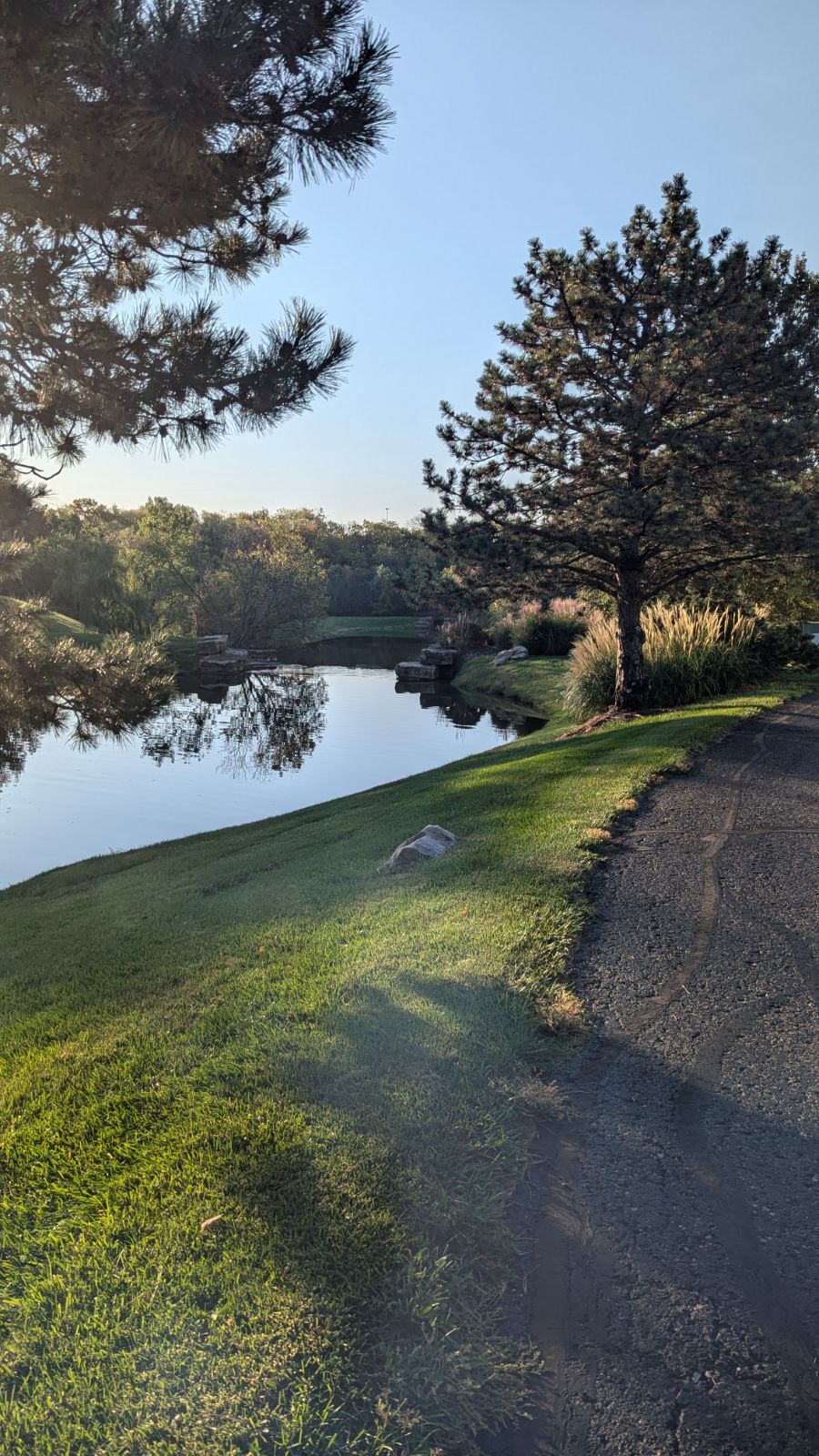
Friends, Romans, countrymen, lend me your eardrums
It was a beautiful day off in the neighborhood
Yellows and greens and blues and browns
And greys and hues that ooze beneath dilapidated wood
Andrew 3000, “Black Ice”
It’s growing cooler in the morning, so different birds are returning and leaving. I saw this one today:
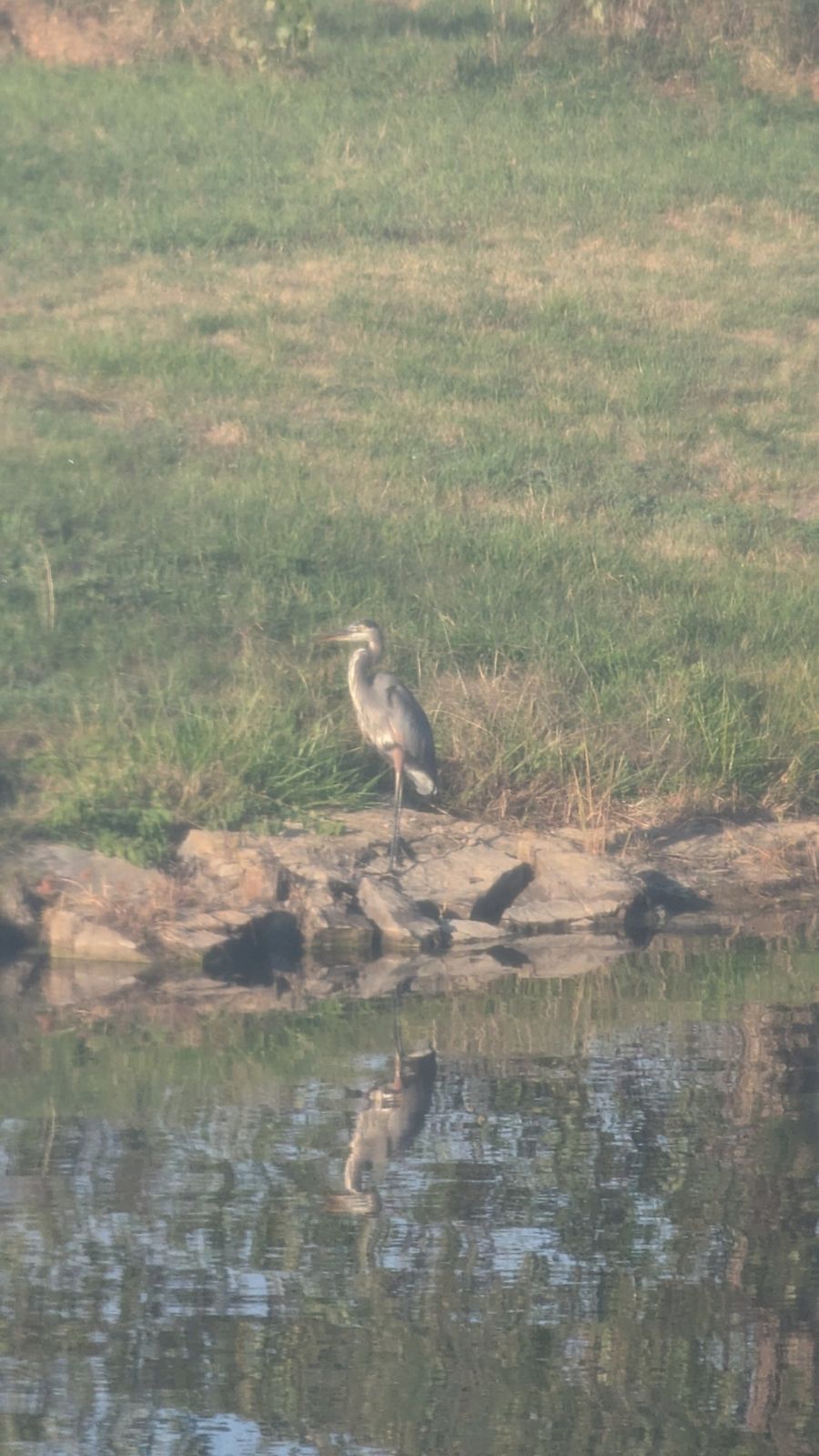
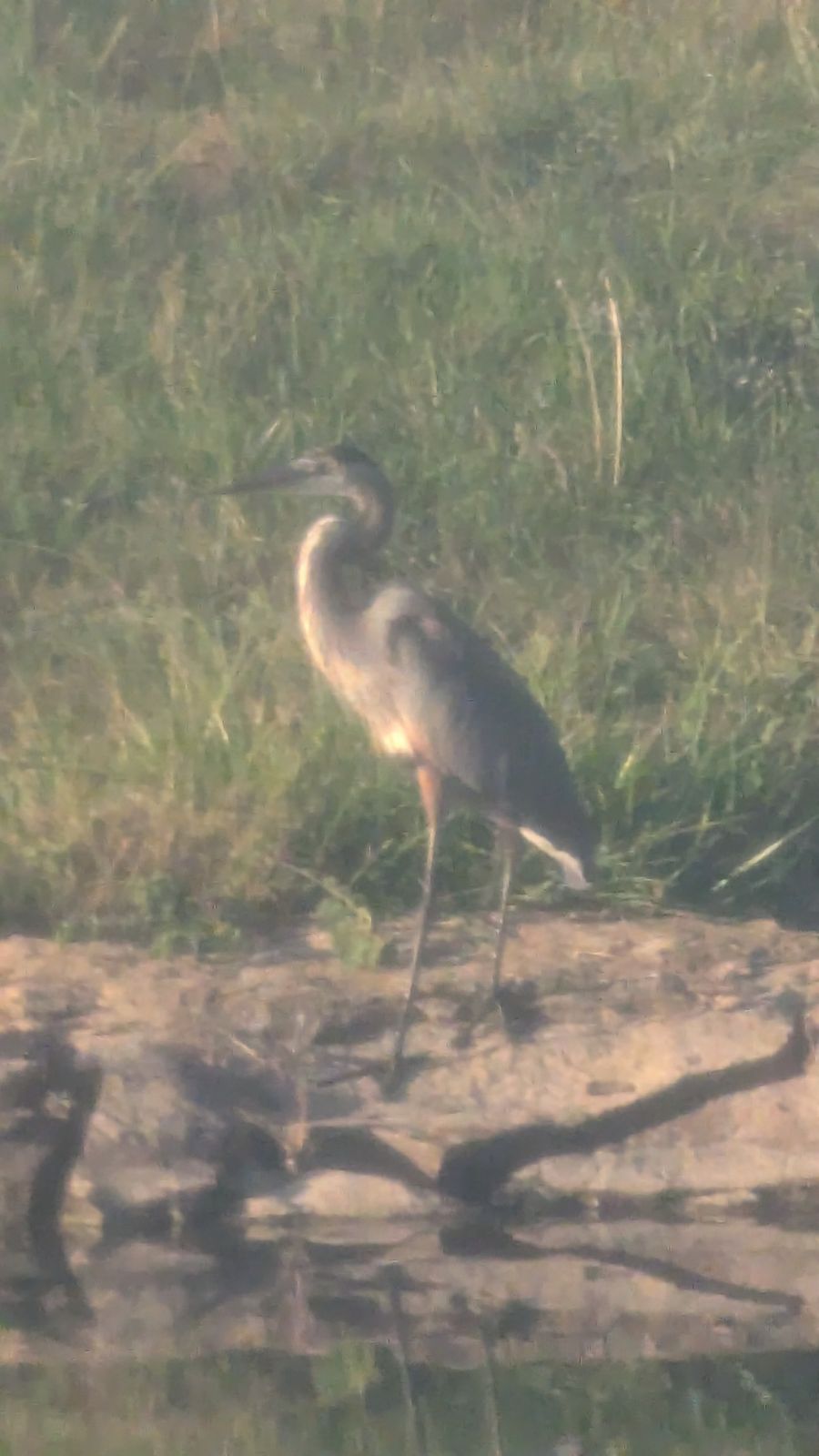
I reckon it’s a Great Blue Heron based on the physical appearance:
- Long, slender legs
- S-curved neck
- Long, pointed beak
- Overall grayish-blue coloration
- Large size (Great Blue Herons are one of the largest heron species in North America)
Finding it near a body of water in this part of the Midwest at this time of year is also in line with GBH behavior. They eat fish — hence this one’s proximity to water when I took the picture — but I don’t often see fish in the ponds.
The ponds are artificial (best I can tell) and don’t feed from a natural body of water, so I don’t know where fish would come from unless they were introduced by man. I did see two small, black fish darting around in the southern pond the other day, but that’s not a typical sight.
Great Blue Herons are wading birds that hunt for fish, amphibians, and other small prey in shallow waters. They’re known for their patient hunting style, often standing still or moving very slowly through the water before quickly striking at their prey. (claude.ai)
From our home’s balcony in the suburbs, my wife took these pictures:
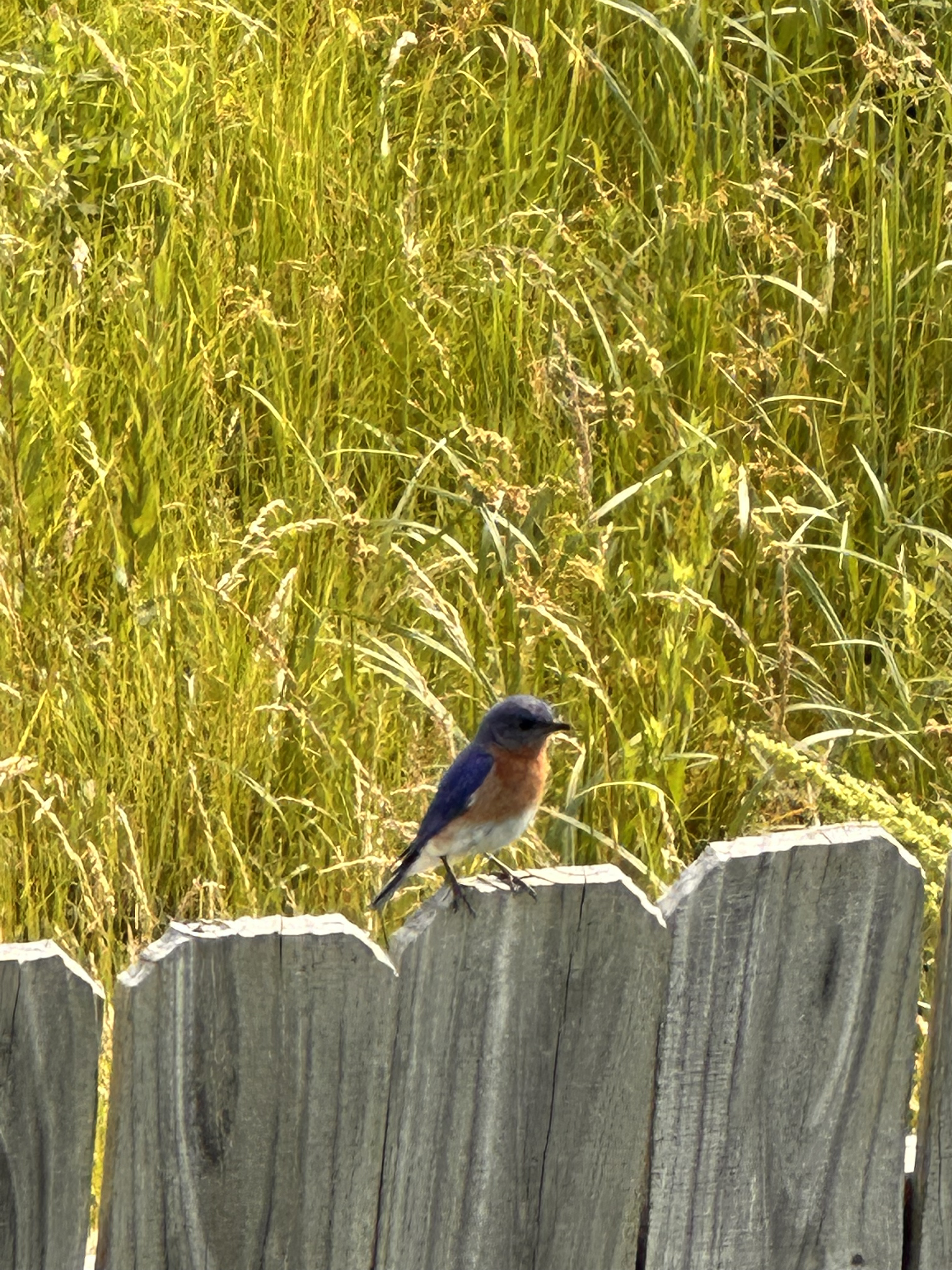
This is an Eastern Bluebird, the state bird of Missorui since 1927. It’s also the state bird of New York.
- Bright blue head and back
- Ruddy breast
- White rump
- Prefers open areas
- Eats insects, berries, and fruit
- Songbird
I built a birdhouse and mounted it to the fence line, and it took about a week before some of these Eastern Bluebirds moved in. The female built the nest in about 5 - 7 days. She used thatch from the pit.
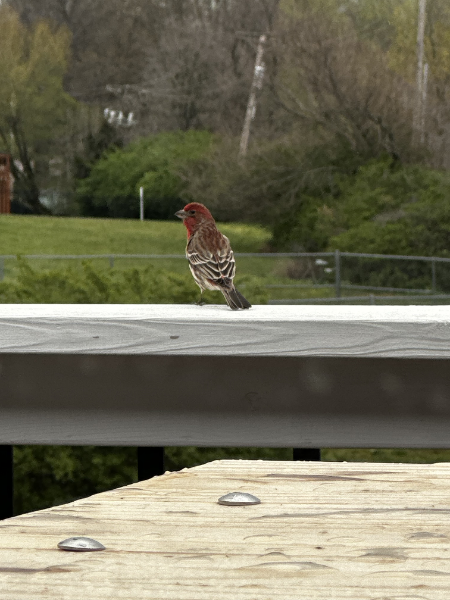
A House Finch. Probably a male (bright red coloration). House Finches are small songbirds with the following characteristics:
- Reddish-pink coloration on the head, breast, and rump
- Brown streaking on the back and sides
- A stout, conical beak typical of seed-eating birds
- A slightly notched tail
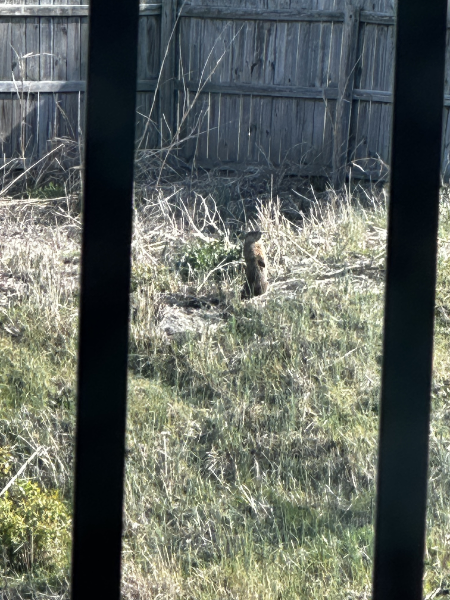
This is not a bird.
This is Mammal, who lives in the pit? Dry retention pond? beyond our house. It’s called Mammal because at the time we first saw him, neither my wife nor I knew what it was, so we settled on using the class name. We’re now almost 100% positive Mammal is a woodchuck. They are also known as “whistlepigs.” It has a funny run and eats flowers and some grasses.
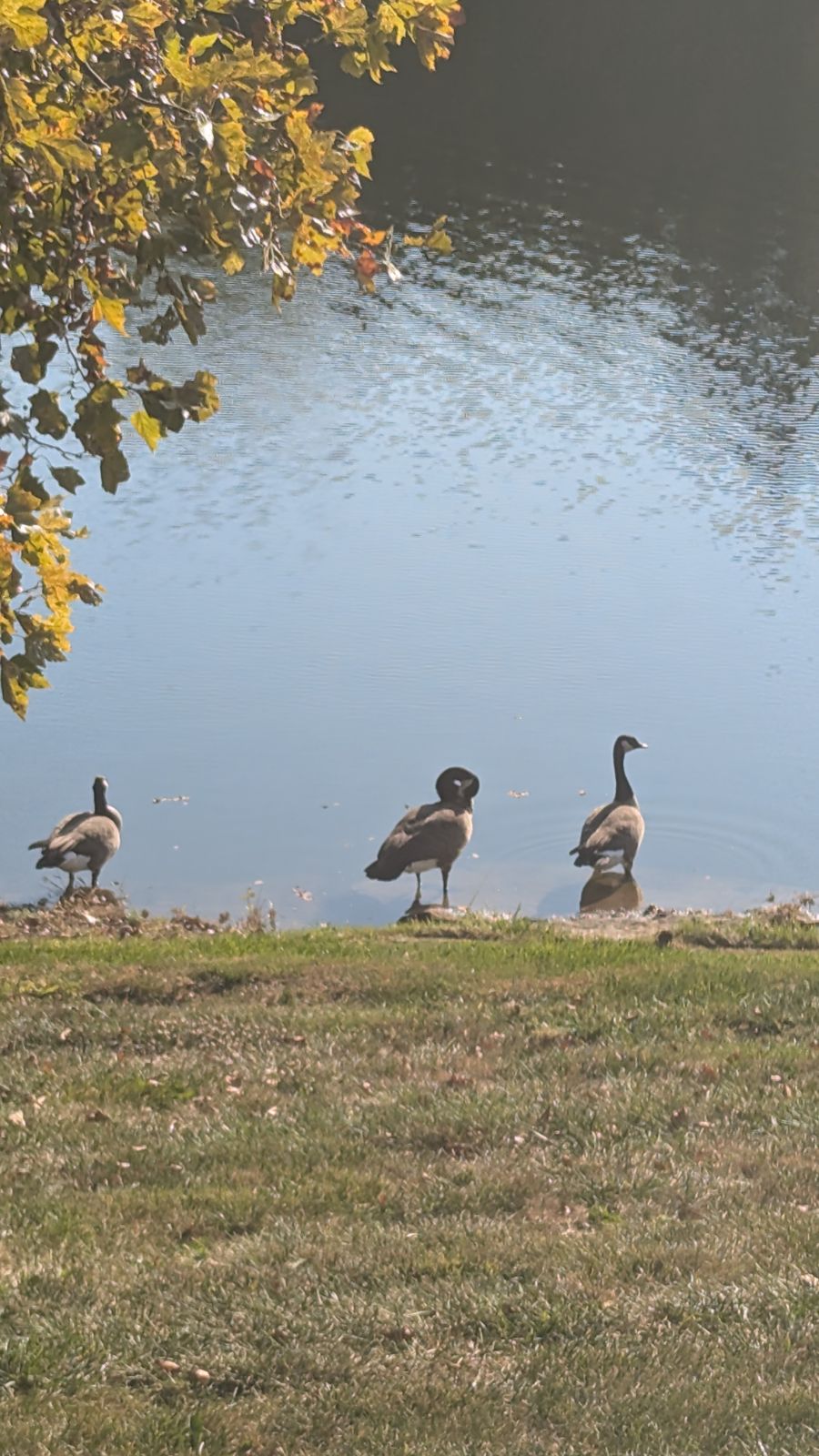
This is a gaggle (or a “plump”) of Canada geese. The ones that frequent the ponds are pretty docile, as dozens of people walk the trails daily, which I assume desensitizes them to human presence. They also don’t care about the cars on the road, which isn’t as great, since the geese just cross the street whenever it pleases them to do so.
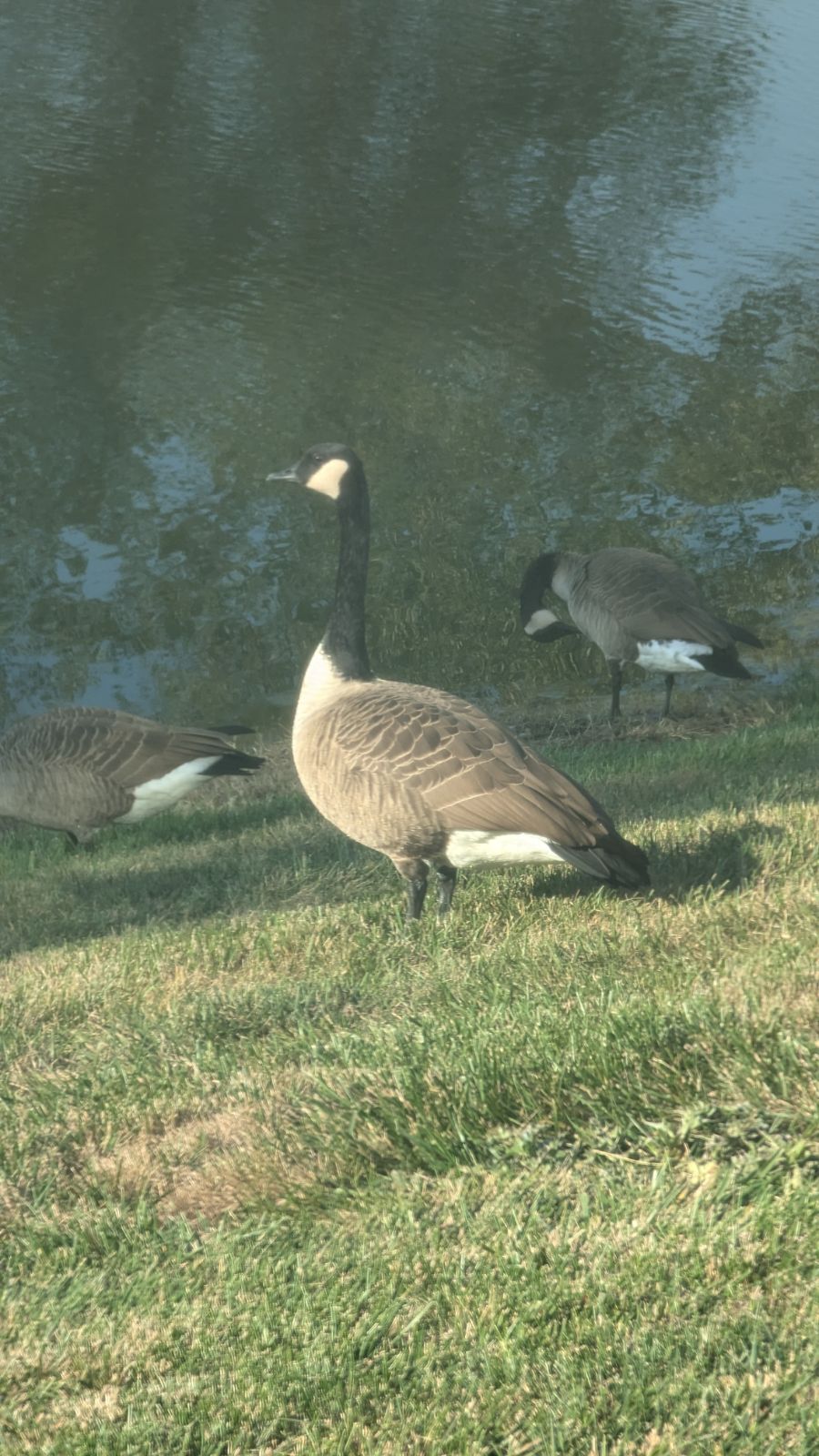
Canada geese are characterized by:
- Large size
- Long black necks
- Black heads with a white “chinstrap” marking
- Tan-brown body feathers
- Lighter colored breast
We call these birds “honkies” because of their distinctive call. They fly in V-shaped wedge formations when a team of them is migrating. We often hear them before we see them.